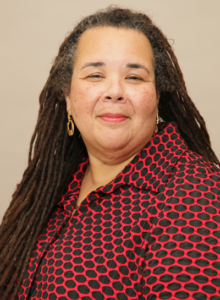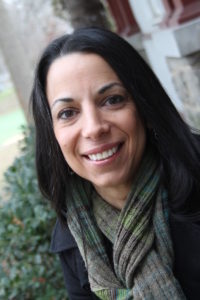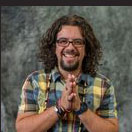teaching for transformation
Select an item by clicking its checkbox

Transformative Learning and Adult Higher Education (New Directions for Teaching and Learning, Number 147)
Date Reviewed: September 13, 2017
Transformative Learning and Adult Higher Education is a small anthology written by adult education practitioner-scholars in which they share diverse learning perspectives and practices utilized in universities for adult learners. The editors and writers of this volume describe creative experiences, unconventional perspectives, and unusual pedagogical methods in a variety of educational contexts that lead adults to experience learning that is transformative. A fundamental premise of the book is that genuine adult learning is synonymous with significant life change.
The book’s animating notion is sociologist Jack Mezirow’s influential theory of Transformational Learning, found in his seminal work, Transformative Dimensions of Adult Learning (Jossey-Bass, 1991). Some acquaintance with Mezirow’s theory is necessary if one is to fully appreciate the book since each contributor builds on it or refers to it. According to Mezirow, transformative learning happens when three things take place in the life of the adult learner. First, an adult learner changes their understanding of themselves. Second, she or he revises their behavior. Third, he or she changes their approach to life (19). The contributors to the book pay homage to the groundbreaking ideas of Mezirow, but do not always locate transformative adult learning inside the limits of Mezirow’s definitions. Sometimes the writers expand the perspectives supplied by Mezirow in avant-garde and provocative ways.
The book is composed of eleven short chapters each written by a different practitioner-scholar in which she or he shares the transformational learning that took place within a specific group of adult learners in a particular context. (For example Chapter 3 explores the learning that took place between female professors and female doctoral students in the advising process of working on their dissertations). The writer then usually shares the character of the learning process which catalyzed the transformative change. Typically, each chapter includes a description of the uniqueness of the population of adult learners the writer was involved with, each chapter gives a report of the qualitative study the contributor completed, and each chapter contains the writer’s reflections about the learning process and outcomes. The chapters are very different from one another, demonstrating the eclectic nature of the learning experiences and the diverse learners involved. A couple of examples of chapter content may reflect the variety and uniqueness of the adult learning described in the volume.
Chapter 1 describes the learning journey of eighteen to twenty-eight-year-old emerging adult undergraduate students who struggle with learning differences (such as dyslexia). The chapter contributor, utilizing Mezirow’s theory and Marcia Baxter-Magolda’s stages of self-authorship (13), details the transformational process by which these students went from viewing themselves as intellectually diminished, and therefore inferior to their “smarter” peers, to being uniquely equipped for life, and therefore confident in engaging life. In this chapter transformative learning was expressed as overcoming a seemingly indomitable life challenge and going forward with determination and optimism.
Chapter 2 presents a study of three black women educators: a portraiture of each woman’s transformative journey is given. One of these women had grown up as a Roman Catholic. Part of her transformational learning involved acknowledging the inadequacy of the Catholic faith for her and abandoning it in favor of a new expression of Christianity which she found generative and liberating. According to the writer of this chapter, transformative learning involved rebelling against her faith, abandoning an old and insufficient way of living, and embracing a new way of seeing the world. Adult transformative learning is often depicted in the eleven chapters as becoming aware of a harmful way of living and discarding it.
The Editor-in-Chief, Catherine M. Wehlburg, wrote that this book regards transformative learning as a “‘rich metaphor’ for exploring the interactions and experiences of students and faculty in higher education” (3). She goes on to write that one will find “many examples of the richness of transformative learning” in this volume (3). I agree. The strength of the volume is its diversity in conceiving of transformative learning and describing some of its possible expressions. These conceptions and expressions are sometimes peculiar and idiosyncratic, but they are always creative and stimulate thought. I found that they beckoned me to stretch the boundaries of my own pedagogical creativity. Further, I found particular pedagogical practices described in the book as ones that I could use in my own teaching with a little adjustment to my context.
The chapters are scholarly, concise, and easy to read. One is able to extract useful ideas without wading through lengthy, rambling prose. A weakness of the volume is that nearly every chapter addresses Mezirow’s chief ideas in such a way as to create the feeling of redundancy. The repeated recitation of those ideas is unnecessary and tiring.
The seminary where I teach has a mission statement which expresses its intention to provide its students theological education that is characterized, in part, as “Christ-centered transformation.” Thus, I was drawn to this book about transformative learning with the hope that it would further illuminate my understanding of transformation inside the context of a confessional Christian institution. My seminary, as well as scores of schools with similar confessional commitments, finds it impossible to think about life transformation apart from particular content. For example, knowledge of the Christian Scriptures and the life of Jesus Christ are believed to be necessary catalysts for genuine life change.
Transformative Learning and Adult Higher Education does not venerate any particular content as necessary for life transformation. Instead, this volume exalts process as the means of transformative learning. Transformation is made possible through the masterful facilitation of a process which is conceived without many definitive guidelines or boundaries. Teachers and scholars in confessional learning contexts will likely, therefore, find the conception of transformative learning contained in this book helpful but incomplete.
Years ago, preparation for the beginning of school was a family affair. The cigar box for storage of pencils, pens, glue, and scissors was gotten by my father from the Pennsylvania State Store. Notebooks, book bags, and new sneakers were on my mother’s to do list. New clothes were ...
I wrote a very thoughtful essay about a week ago on teaching social justice as a theological value. It centered on a chance meeting my spouse and I had with the CEO and Executive Director of Habitat for Humanity of Westchester, Jim Killoran. In that piece, I wanted to make ...
In a poem entitled The World’s Feeling,[1] the Brazilian poet Carlos Drummond de Andrade has a line that says: “I have only two hands and all the feelings of the world.” I love this metaphor and I feel that this is how I have been living lately. The political ...

Civic Learning and Democratic Engagement (New Directions for Community Colleges, Number 173)
Date Reviewed: November 16, 2016
New Directions in Community Colleges, may be an unfamiliar journal to many scholars in theology and religion, but growing interest in community colleges as transformational contexts warrants attention. This edition presents scholarship on ethical and pedagogical issues of civic engagement in higher education. Recording workshops at the Kettering Foundation convened by Derek Barker collaborating with editors, Ronan and Kisker, these authors share the conviction that higher education should promote democratic values. Without fully acknowledging controversial aspects of that claim, they explore common ground working for social mobility, civic agency, and democratic practices such as voting, public discourse, and advocacy.
Contributors reflect on two reports, both published in 2012: “Advancing Civic Learning,” representing the work of the U.S. Department of Education, and “A Crucible Moment,” written by the National Task Force on Civic Learning and Democratic Engagement, work of the American Association of Colleges and Universities. Both reports address educational goals of preparing engaged citizens who transfer civic skills like capacities for communicating, leading, organizing, and advocating from the classroom to workplace, public, and personal settings. Furthermore, the integration and assessment of civic learning and democratic engagement across educational programs from formal curriculum to extracurricular opportunities offered insight for building institutional support or resources for others innovative programs.
For instance, Carrie Kisker surveyed sixty community colleges asking whether civic engagement was a goal stated in missions or strategic plans with dedicated infrastructure and incentives in tenure or advancement process. She found diversity of approaches but high level of integration in curriculum and encouragement in extracurricular programs. However, her findings document a lack of a standardized instrument to assess civic engagement and the need for more study of institutionalized support. Other highlights include David Matthews’s proposed deliberative pedagogy which he linked to timely questions about authority and legitimacy in the public mandate for institutions of higher education. For example, John J. Theis cited the problems of people losing confidence in each other and in institutions, drawing on Carcasson’s work noting that the “expert model” usually dominates higher education in ways that disempowers collective action (43). The authors connect their work as educators with enduring questions of ethics, cultural identities, and inequality.
Significant numbers of students learning about religious studies and theology are enrolled in classes at community colleges with more racial and economic diversity than most seminary or elite college and university classes. Despite the lack of prestige or attraction these settings may have for many faculty, community colleges are rich in ability to shape citizens and hence the future of our communities. Furthermore, although many seminaries and religious studies departments compete fiercely and perpetuate bitter rivalries to attract students, community colleges seem better able to collaborate with each other and learn together in ways institutions for teaching religion and theology would do well to study. Since religious institutions also need leaders with civic competencies, theological educators concerned with the future will find the journal provocative. Especially those educators committed to promoting the common good, social justice, and public engagement will benefit from reading this book.


